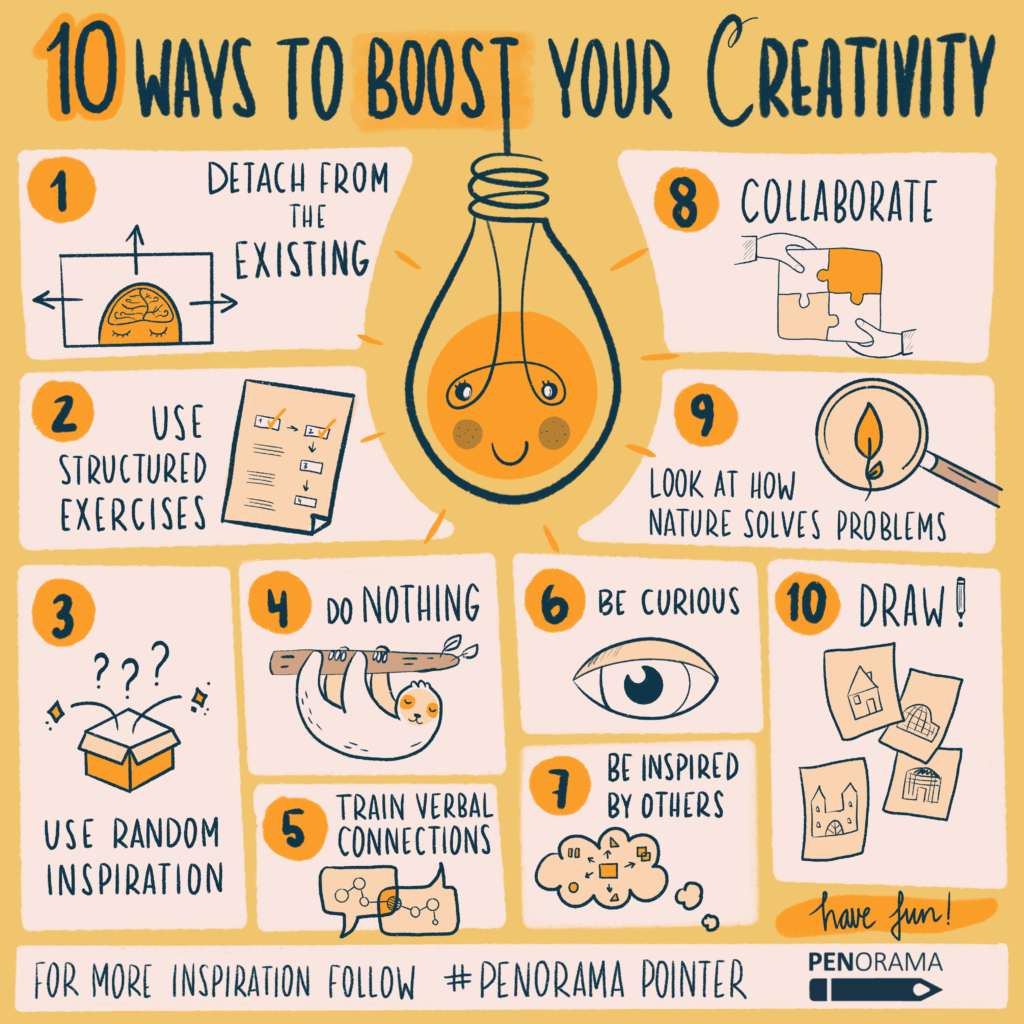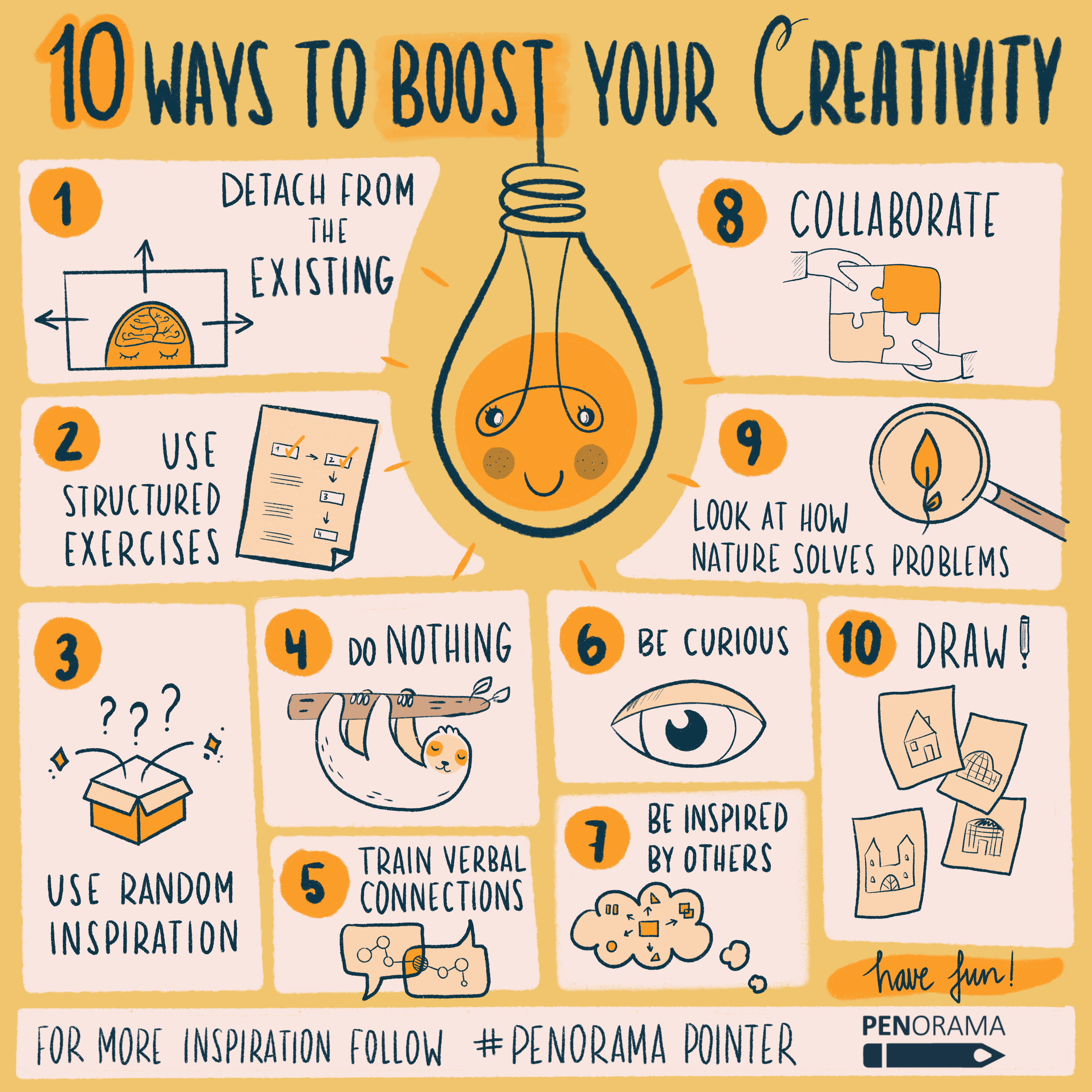In connection with United Nations #worldcreativityday, I illustrated my ten best tips for how to boost creativity
# 1 Detach from the existing
The first exercise is to overcome the mental barriers so that new connections can be made. If everything we think about is ‘this has been tried before,’ ‘this won’t work,’ and ‘this is not a good idea,’ we will not be able to see new possibilities.
A method of detaching from the existing is to set up a few guiding principles that force us to think freely and positively so that new ideas can form and take shape.
Alex Osborn originally developed Brainstorming in 1953 in his book Applied Imagination: Principles and Procedures of Creative Thinking.
The basic principles are:




Build on other’s ideas. Association stimulates ideas
If all the positivity is not your thing, try out ‘reverse brainstorm’ or ‘negative brainstorm’, where you come up with all the reasons why something will not work. Afterward, you can brainstorm solutions to all the different obstacles.
# 2 Use structured exercises
Having an infinite solution space where everything is possible can—counterintuitively—be restricting. We often get overwhelmed by opportunities. Setting up boundaries can help us be creative within a smaller space that seems easier to work with.
Here is a long and incomplete list of structured methods to generate ideas:
Brainstorm, user interviews, roll a snowball, personas, the 5 whys, journey mapping, spiderweb, SCAMMPERR, Thinking Hats, focus groups, association exercises, morphology analysis…
Look into the different solutions and try giving them a go to see how they work for you.
# 3 Use random inspiration
A classic tool to stimulate new and unexpected solutions: Look at how to solve a problem in a new way.
How might I solve X with Y?
Spark imagination with a random Y.
Y could, e.g., be…
…the third noun in the first LinkedIn post that appears in your feed
…the fourth word in the headline on the second page of the newspaper
…what you point at when you open a random page in a magazine with your eyes closed
…the first word being said when you turn on the TV
# 4 Do nothing
When we are not doing anything and our brain is not bombarded with information and impressions, we are more likely to see new connections
Sit withou.t distractions and stare out in the blue. Or try taking a shower (quite a few people say that this is THE place where they get ideas, breakthroughs to tough challenges, and ‘divine’ inspiration)
Creativity often comes from boredom. Giving your brain a break can spark new energy and leave room to make those connections you couldn’t see or didn’t know existed
# 5 Train verbal connections
Comparisons, metaphors, similes, and analogies. Writers and poets have always used words to directly and explicitly compare and describe other things and make new connections.
Try using different variations of this to train seeing new connections:




E.g. Sun + Flower = Sunflower.


# 6 Be curious
Be curious about the world around you…







Exposing yourself to new impressions will open your mind and stimulate your brain to make new connections.
# 7 Be inspired by others
It’s OK to feel uncreative, to feel empty and lost for ideas. We can’t always force good ideas out on demand.
But then what to do?
Don’t worry. Every idea does not need to come from your head.
Seek inspiration from past, present, and future people:




And most importantly, ask people!
Talk to people and listen to their understanding and ideas about the problem.





# 8 Collaborate
Discuss your issue or idea with others. An idea formed in one mind can change and grow when adopted in another mind.
Different people, different perspectives, different ideas, different solutions. Diversity spurs creativity.
1+1 can sometimes equal 3
Examples of more formalized methods:
Co-creation: innovating customer involvement
Open Innovation: innovating with stakeholders
# 9 Look at how nature solves problems
Go outside for new inspiration. Get some fresh air and look at how good old Mother Nature has solved problems since the beginning.
#biomimicry is nature-inspired innovation
and there are endless excellent solutions to be inspired from….



# 10 DRAW!
Last but not least: draw!
Drawing is a powerful tool for boosting creativity. Doodling and drawing can lead to new connections.
When you draw a problem or challenge, you are forced to really see and understand it. Quite often, it is easier to find a solution when your hand, eye, and brain work together.
Try simple drawings, such as mind maps, to visually lay out what you know and assume about the issue you are trying to solve.
Or try to make random doodles while thinking about the problem you want to solve.









